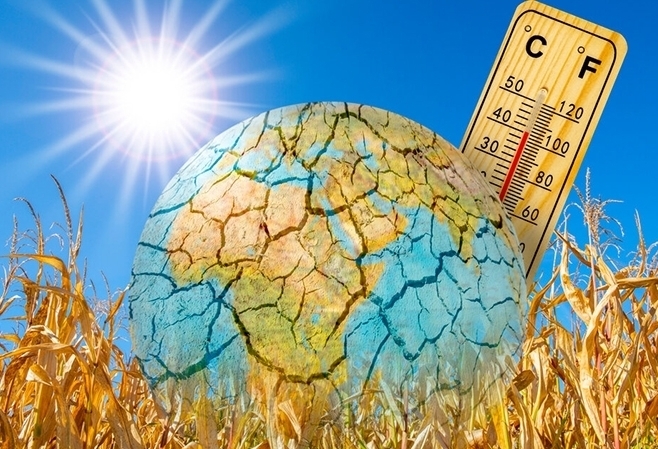



From Death Valley to the Swiss Alps, extreme weather records hit new heights

Baku, August 24, AZERTAC
As sweltering conditions continue to grip large parts of Europe, temperatures have “reached new heights” in Switzerland, the UN World Meteorological Organization (WMO) warned on Tuesday, according to the official website of the UN.
Speaking in Geneva, WMO spokesperson Clare Nullis said that a new altitude record for the freezing point had been set a day earlier, climbing to 5,298 metres (17,381 feet) – well above Europe’s very highest peaks including Mont Blanc, at 4,811 metres (15,784 feet).
WMO figures show that this is 115 metres above the previous record of 25 July 2022 and the highest since measurements began in 1954.
Nullis explained that the freezing level had been measured by a Meteo-Suisse weather balloon above Payerne in the western canton of Vaud.
“The impact of this heat on glaciers is playing out before our eyes,” she said. “The freezing level in the glaciers, [and] the disappearance of snow was dramatic last year. Unfortunately, with this latest heatwave, that trend is continuing.”
Meanwhile, large parts of Switzerland are on level three amber alert or the top-level red alert until Thursday, the WMO spokesperson said.
Temperatures in much of the southern half of France are forecast to be “above 37°C” on Tuesday, “reaching a peak of 40°C to 42°C in the Drome region.
The WMO spokesperson pointed out that French national weather forecaster Météo-France had issued an amber alert for 49 departments and a red alert for four. The French national meteorological service said that numerous station records had fallen - both maximum daytime temperatures and minimum overnight ones, which have a particular impact on health.
Nullis warned that there were also red alerts in parts of Italy, Croatia and Portugal and widespread amber heat alerts in neighbouring countries.
On the other hand, parts of Europe and in particular Scandinavia have seen “unusually heavy precipitation. Norway once again on Tuesday issued a red alert for heavy rainfall, “a life-threatening risk in the southern part of the country”, Nullis added.
In response to questions about the how many people are at risk from the unrelenting heat, UN World Health Organization (WHO) spokesperson, Tarik Jašarević, said that statistics from last summer showed that more than 61,000 people had died from heat-related causes in 35 European countries during the summer months last year.
The impact of extreme temperatures on glaciers is under investigation, but the effects of the heatwave are clear, with snow cover now present only at the highest elevations in Switzerland, according to WMO.
The UN agency defines heatwaves as “a period of statistically unusual hot weather persisting for a number of days and nights”. The current baseline used to gauge how extreme conditions are is the 30-year period from 1991 to 2020.
Although the meteorological summer is coming to an end in the northern hemisphere, it is impossible to state with any certainty whether the current heatwave will be the last this season.
And although there had been expert discussions on naming heatwaves in the same way as tropical cyclones, WMO has no plans to do so, maintaining that the two weather systems are not comparable and that such a move might detract from public safety messaging.
Outside Europe, sweltering conditions have continued in much of the central and southern US, with multiple excessive heat warnings issued in the central Plains States and Texas.
Tropical cyclone activity in the Atlantic has also been “ramping up”, said Ms. Nullis, adding that three tropical systems – Gert, Franklin, and Harold – were of “particular concern”.
Franklin has brought the risk of flooding to Haiti and the Dominican Republic, while Harold is predicted to make landfall in southern Texas bringing very heavy rainfall and the risk of flash-flooding at a time when the state was battling extreme heat and drought.
Nullis said that hurricane Hilary had now dissipated but had reached parts of southern California, which rarely witnessed such rainfall totals.
Virtually all precipitation records in Los Angeles had been broken, the WMO official added, noting that Death Valley has just seen its all-time wettest day on record, with 2.20 inches (55.88 mm) of rainfall, breaking the previous record of 1.70 inches set in August 2022.
In a related development, WMO’s Greater Horn of Africa Weather Forum was due to meet on Tuesday, before issuing its latest update for the rest of the year.
Emperor penguins lost thousands of chicks to melting ice last year
From Death Valley to the Swiss Alps, extreme weather records hit new heights
Magnitude 5.0 quake jolts Azerbaijan’s Masalli-Jalilabad administrative border